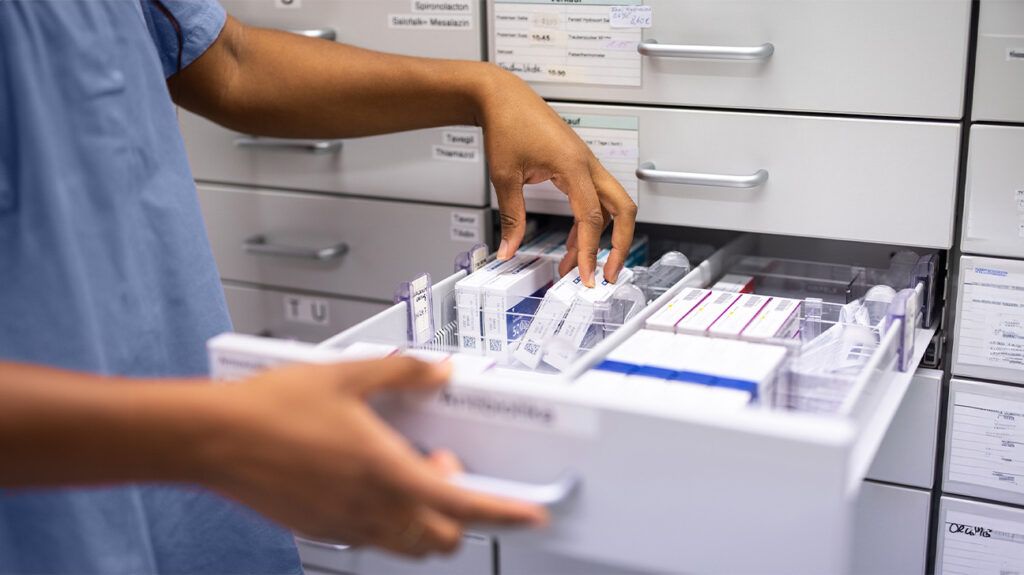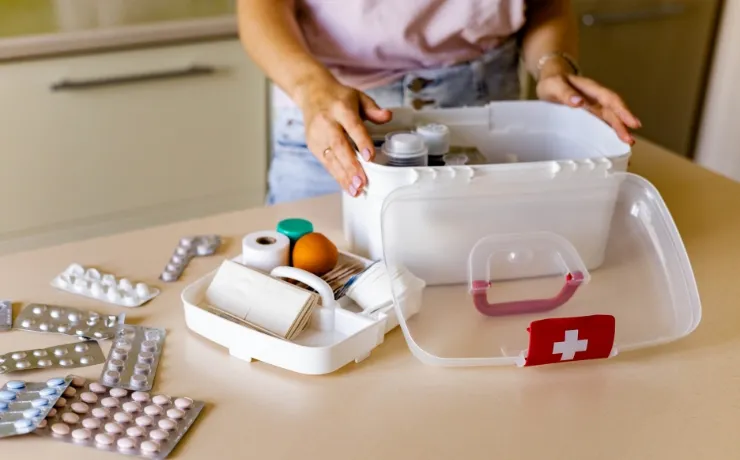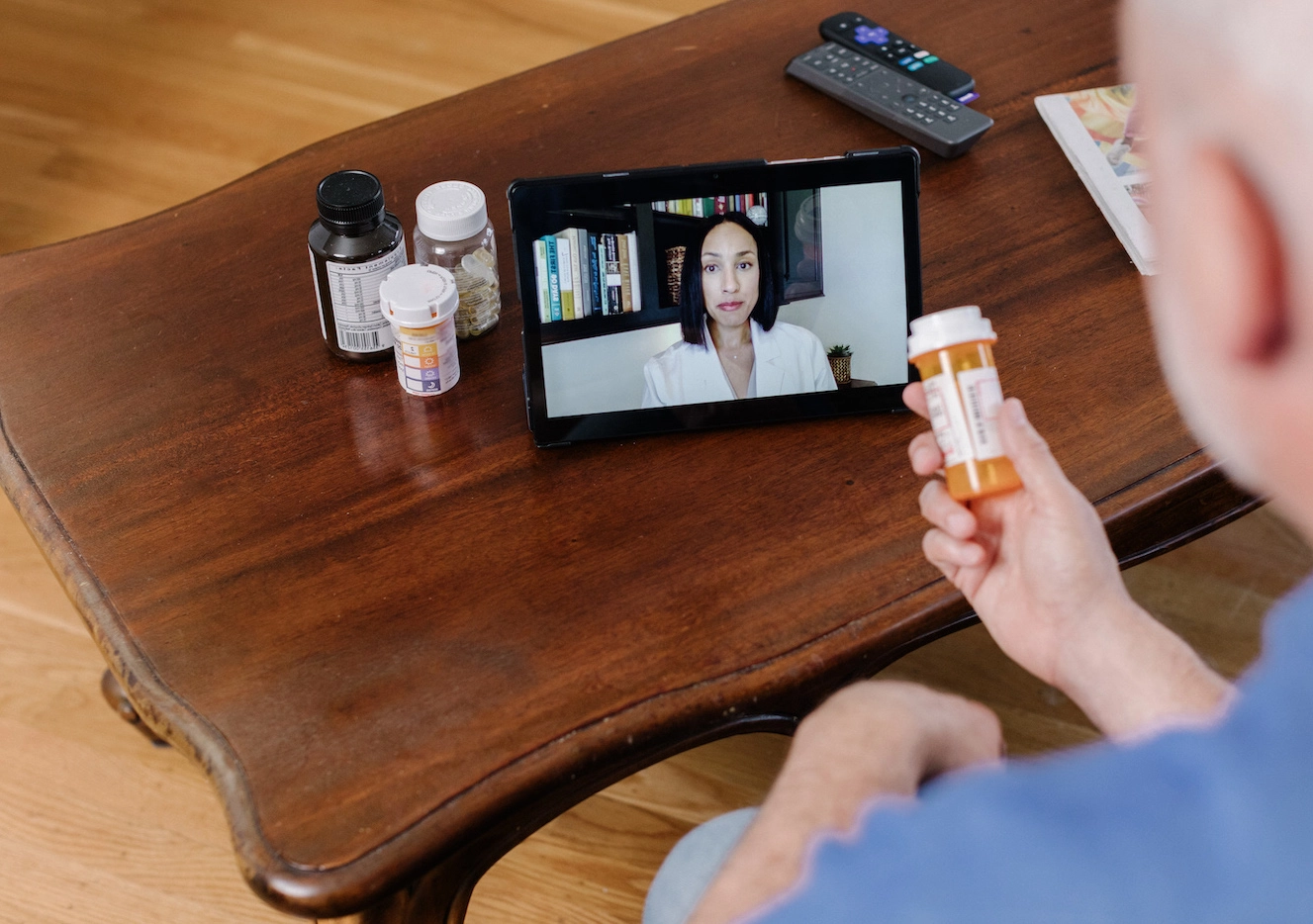Running out of essential medication when you can’t reach your primary care doctor can be a stressful situation. Whether you’re traveling, your doctor is on vacation, or you simply don’t have a regular physician, there are several legitimate and safe ways to obtain prescription refills without seeing your usual doctor. This comprehensive guide will walk you through your options, legal considerations, and best practices how to get a prescription refill without a doctor!

Understanding how to get a prescription refill without a doctor : Your Prescription Refill Options
Before exploring alternatives, it’s crucial to understand the basic mechanics of prescription refills. Every prescription bottle contains vital information about your remaining refills, which you can find clearly labeled on the prescription label. The number typically appears as “Refills: X” where X represents how many refills you have left.
According to healthcare regulations, most non-controlled medications can be refilled multiple times within a specific timeframe, usually one year from the original prescription date. However, controlled substances follow much stricter rules and often require new prescriptions for each fill.
Checking Your Prescription Status
The first step in obtaining a refill without your doctor is determining whether you actually need medical authorization. Check your prescription bottle for:
- Number of refills remaining
- Original prescription date
- Expiration date for refills
- Medication classification (controlled vs. non-controlled)
If you have refills remaining and they haven’t expired, you may be able to get your medication refilled through your pharmacy without any additional medical consultation.
Telehealth Services: Your Digital Doctor Visit

Telehealth has revolutionized how patients access medical care, making it possible to consult with licensed physicians from the comfort of your home. These services have become increasingly popular and widely accepted, especially following the COVID-19 pandemic.
How Telehealth Prescription Refills Work
Telehealth platforms connect you with board-certified doctors who can review your medical history, assess your current medication needs, and authorize prescription refills when appropriate. The process typically involves:
- Registration: Create an account on a reputable telehealth platform
- Medical History: Complete a comprehensive health questionnaire
- Virtual Consultation: Meet with a licensed physician via video call
- Prescription Authorization: The doctor can send prescriptions directly to your pharmacy
- Follow-up: Some platforms offer ongoing care coordination
Popular telehealth services include Teladoc, MDLIVE, and Doctor On Demand. Many of these services accept insurance and can provide same-day appointments.
Benefits of Telehealth for Prescription Refills
- Convenience: Access medical care 24/7 from anywhere
- Speed: Often same-day appointments available
- Cost-effective: Typically less expensive than emergency room visits
- Comprehensive care: Can address multiple health concerns in one visit
- Documentation: Creates proper medical records for future reference
According to recent studies, telehealth services have shown to improve medication adherence while reducing the administrative burden on primary care physicians. Healthcare research demonstrates that pharmacist-managed refill services combined with telehealth consultations can significantly enhance patient care outcomes.
Pharmacy-Based Refill Options

Modern pharmacies offer several services that can help you obtain prescription refills without visiting a doctor. These services vary by state and pharmacy chain, but many offer valuable alternatives for maintaining medication continuity.
Emergency Refill Programs
Most major pharmacy chains, including CVS, Walgreens, and Rite Aid, have policies allowing pharmacists to provide emergency refills under specific circumstances. These programs are designed to prevent dangerous gaps in medication for patients with chronic conditions.
Emergency refill criteria typically include:
- The medication is essential for maintaining health
- You have a valid prescription history at the pharmacy
- The medication is not a Schedule II controlled substance
- You can demonstrate a legitimate need (travel, doctor unavailable, etc.)
- The refill amount is limited (usually 3-7 days supply)
Pharmacist Clinical Services
Many pharmacies now offer expanded clinical services through certified pharmacists who can:
- Review medication histories
- Provide medication therapy management
- Coordinate with healthcare providers
- Offer limited prescription renewals for certain conditions
These services are particularly valuable for managing chronic conditions like diabetes, hypertension, and high cholesterol. Pharmacist-managed care programs have shown excellent results in improving patient outcomes while reducing healthcare costs.
Online Pharmacy Portals
Most major pharmacy chains offer online portals where you can:
- Request prescription refills 24/7
- Set up automatic refill programs
- Track refill status in real-time
- Receive notifications when prescriptions are ready
- Access prescription history and records
These portals often integrate with your healthcare provider’s electronic health records, streamlining the refill approval process.
Urgent Care Centers: Walk-in Medical Support
When you need immediate medical attention for prescription refills, urgent care centers provide an excellent middle ground between primary care visits and emergency room care. These facilities are staffed with qualified healthcare providers who can assess your medication needs and provide appropriate refills.
What to Expect at Urgent Care
Urgent care centers can typically help with:
- Reviewing your current medications
- Assessing continued medical necessity
- Providing short-term refills while you establish care with a new primary physician
- Managing chronic conditions that require ongoing medication
- Coordinating with your regular healthcare provider
Important: Bring all relevant medical documentation, including:
- Current prescription bottles
- Medical history records
- Insurance information
- List of allergies and current medications
Cost Considerations
Urgent care visits are generally less expensive than emergency room visits but more costly than primary care appointments. Most insurance plans cover urgent care visits, though you may be responsible for copayments or deductibles.
Legal and Safety Considerations
Understanding the legal framework surrounding prescription refills is crucial for safely obtaining your medications. Federal and state laws strictly regulate prescription medications, particularly controlled substances, to prevent abuse and ensure patient safety.
Federal Regulations
The Drug Enforcement Administration (DEA) oversees the prescribing and dispensing of controlled substances. Recent updates to DEA regulations have extended telehealth prescribing flexibilities, allowing healthcare providers to prescribe certain controlled substances through telemedicine platforms under specific conditions.
State-by-State Variations
Prescription refill laws vary significantly between states. Some states allow pharmacists broader discretion in providing emergency refills, while others maintain stricter requirements. It’s essential to understand your state’s specific regulations.
Key state variations include:
- Maximum emergency refill quantities
- Approved medication categories for emergency refills
- Required documentation for emergency situations
- Pharmacist scope of practice limitations
Controlled Substance Restrictions
Schedule II controlled substances (such as opioids, stimulants for ADHD, and certain pain medications) typically cannot be refilled and require new prescriptions for each fill. Schedule III-V substances may have limited refill options depending on state laws.
Common controlled substances requiring special handling:
- Opioid pain medications (oxycodone, morphine, fentanyl)
- ADHD medications (Adderall, Vyvanse, Ritalin)
- Benzodiazepines (Xanax, Valium, Ativan)
- Sleep medications (Ambien, Lunesta)
Online Prescription Services and Digital Health Platforms

The digital health revolution has created numerous platforms specifically designed to help patients access prescription medications conveniently and safely. These services combine technology with licensed medical professionals to provide comprehensive prescription management.
Direct-to-Consumer Prescription Services
Several companies specialize in providing prescription refills for specific conditions:
- Chronic condition management: Platforms focusing on diabetes, hypertension, and cholesterol management
- Mental health medications: Services specializing in antidepressants and anxiety medications
- Specialty medications: Platforms for specific therapeutic areas like dermatology or reproductive health
Subscription-Based Medication Services
Some platforms offer subscription models where patients receive regular medication deliveries based on their prescription schedules. These services often include:
- Automatic refill scheduling
- Medication synchronization
- Clinical support and monitoring
- Cost optimization strategies
Integration with Electronic Health Records
Modern prescription services increasingly integrate with electronic health record systems, allowing for:
- Seamless information sharing between providers
- Comprehensive medication history tracking
- Drug interaction checking
- Coordinated care between multiple healthcare providers
Insurance and Cost Management
Understanding how insurance covers prescription refills obtained through alternative channels is crucial for managing healthcare costs effectively.
Insurance Coverage for Telehealth
Most major insurance providers now cover telehealth consultations, including:
- Medicare (with some limitations)
- Medicaid (varies by state)
- Private insurance plans
- Employer-sponsored health plans
Prescription Assistance Programs
For patients without insurance or those facing high medication costs, several assistance programs are available:
- Manufacturer discount programs: Direct from pharmaceutical companies
- Patient assistance foundations: Non-profit organizations providing medication access
- Pharmacy discount programs: Chain-specific savings programs
- Government assistance: State and federal programs for eligible patients
Cost Comparison Strategies
When obtaining prescriptions through alternative channels, consider:
- Generic vs. brand name options
- 90-day supply discounts
- Mail-order pharmacy savings
- Prescription discount cards and apps
Emergency Situations and Travel Considerations

Certain situations require immediate attention and may qualify for emergency prescription protocols. Understanding these scenarios can help you access essential medications when traditional healthcare channels aren’t available.
Qualifying Emergency Situations
Medical emergencies that may warrant special refill considerations include:
- Natural disasters affecting healthcare infrastructure
- Sudden illness preventing doctor visits
- Travel emergencies where prescriptions are lost or stolen
- Unexpected changes in insurance coverage
- Doctor unavailability during critical medication periods
Travel and Prescription Management
When traveling, especially internationally, medication management becomes more complex:
- Domestic travel: Most US prescriptions can be filled at any licensed pharmacy
- International travel: Requires advance planning and possible temporary supplies
- Lost medications: Embassy services and local healthcare providers may assist
- Time zone adjustments: Particularly important for time-sensitive medications
Documentation for Emergency Refills
Maintain proper documentation to facilitate emergency refills:
- Digital photos of prescription labels
- Medical history summaries
- Emergency contact information for healthcare providers
- Insurance card information
- List of current medications with dosages
Building a Sustainable Medication Management System
While knowing how to get prescription refills without a doctor is valuable, establishing a comprehensive medication management system provides the best long-term solution.
Establishing Primary Care
Having a regular primary care physician remains the gold standard for medication management. Benefits include:
- Comprehensive health monitoring
- Coordinated care with specialists
- Preventive healthcare services
- Established medical history and relationships
- Streamlined prescription management
Pharmacy Relationships
Building relationships with pharmacists and pharmacy staff can provide:
- Personalized medication counseling
- Drug interaction monitoring
- Cost-saving recommendations
- Emergency refill assistance
- Health screening services
Technology Integration
Leveraging technology for medication management includes:
- Smartphone apps for medication reminders
- Electronic health record access
- Telehealth platform relationships
- Prescription delivery services
- Health monitoring devices
Best Practices for Safe Prescription Management
Regardless of how you obtain prescription refills, following best practices ensures your safety and medication effectiveness.
Medication Safety Guidelines
Storage and handling:
- Store medications in appropriate conditions (temperature, humidity, light)
- Keep medications in original containers with labels
- Regularly check expiration dates
- Dispose of expired medications safely
Drug interactions:
- Maintain current medication lists
- Inform all healthcare providers of all medications
- Be aware of over-the-counter drug interactions
- Report adverse reactions promptly
Communication with Healthcare Providers
Maintain open communication channels:
- Inform your primary care doctor of any alternative prescription sources
- Share medication changes with all healthcare providers
- Keep detailed records of medication history
- Report any side effects or concerns promptly
Quality Assurance and Verification
When using alternative prescription sources, verify the legitimacy and quality of services:
Verifying Healthcare Providers
- Check medical licenses through state medical boards
- Verify telehealth platform accreditation
- Research provider credentials and reviews
- Ensure compliance with HIPAA privacy regulations
Pharmacy Verification
- Use only licensed pharmacies
- Verify pharmacy credentials through state boards
- Be cautious of unusually low prices or questionable practices
- Ensure proper prescription security measures
Frequently Asked Questions (Q&A)
Q: Can I get controlled substances refilled without seeing my doctor?
A: Generally, no. Schedule II controlled substances (like most opioids and ADHD medications) require new prescriptions for each fill. Schedule III-V substances may have limited refill options through telehealth services, but this varies by state and provider policies.
Q: How much do telehealth prescription refills typically cost?
A: Telehealth consultations typically range from $40-$200 depending on the platform and whether you have insurance coverage. Many insurance plans now cover telehealth visits similar to in-person appointments.
Q: What information do I need for an emergency pharmacy refill?
A: You’ll typically need your prescription bottle or prescription number, valid identification, insurance information, and documentation of the emergency situation (such as travel itinerary or proof of doctor unavailability).
Q: Are online pharmacies safe for prescription refills?
A: Licensed online pharmacies that require valid prescriptions are generally safe. Always verify pharmacy licensing through your state board of pharmacy and avoid sites that don’t require prescriptions or offer unusually low prices.
Q: How far in advance should I request prescription refills?
A: Most pharmacies recommend requesting refills 3-7 days before running out of medication. For travel or potential emergencies, consider requesting refills 2 weeks in advance when possible.
Q: Can pharmacists refuse to provide emergency refills?
A: Yes, pharmacists have professional discretion and may refuse emergency refills if they determine it’s not appropriate or safe. This decision is based on professional judgment and state regulations.
Q: What should I do if my prescription is stolen while traveling?
A: Contact local police to file a report, then contact a local pharmacy or healthcare provider. The police report may help facilitate an emergency refill. For controlled substances, you may need to contact your prescribing physician directly.
Q: How do I transfer prescriptions between pharmacies?
A: Contact your new pharmacy with your prescription information and current pharmacy details. The new pharmacy can usually transfer most prescriptions electronically, though controlled substances may have additional requirements.
Conclusion
Getting a prescription refill without your primary doctor is not only possible but increasingly convenient thanks to modern healthcare technology and expanded pharmacy services. Whether through telehealth consultations, emergency pharmacy programs, urgent care visits, or online prescription services, patients have multiple legitimate options for maintaining their medication regimens.
The key to success lies in understanding your options, following legal requirements, and maintaining proper communication with healthcare providers. While these alternative methods provide valuable flexibility, they work best as part of a comprehensive healthcare strategy that includes regular primary care relationships and proactive medication management.
Remember that quality pharmacy services can provide essential support in managing your prescriptions and connecting you with appropriate healthcare resources when needed. By staying informed about your options and maintaining proper documentation, you can ensure continuous access to essential medications while prioritizing your health and safety.